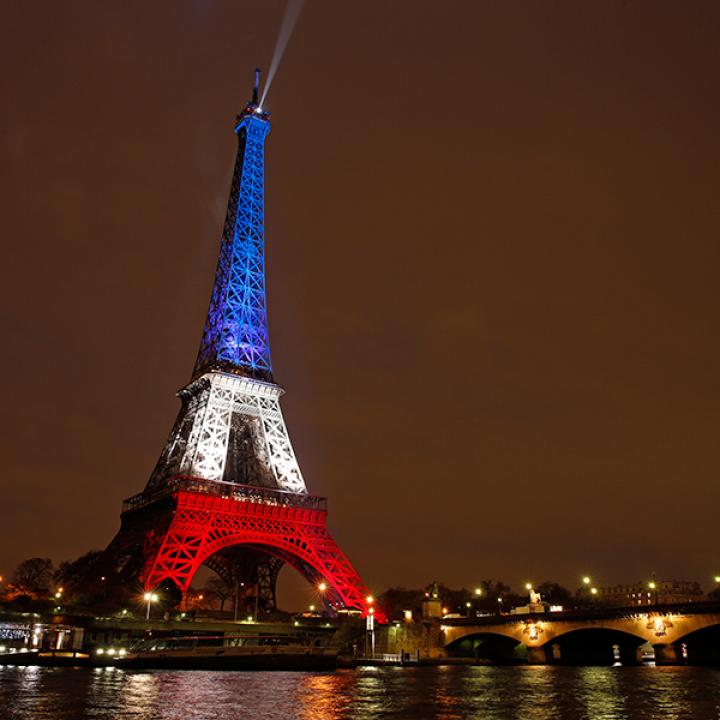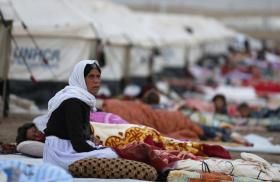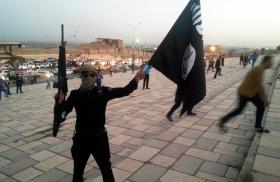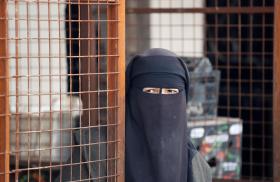
- Policy Analysis
- PolicyWatch 3400
Terrorism in France: New and Old Trends in Jihadism

Part of a series: Counterterrorism Lecture Series
or see Part 1: U.S. Efforts against Terrorism Financing: A View from the Private Sector
Three experts on European jihadism discuss the root causes and operational significance of recent Islamist violence in France.
On November 10, The Washington Institute held a virtual Policy Forum with Laurence Bindner, Hugo Micheron, and Aaron Zelin. Bindner is the cofounder of JOS Project, an associate fellow with GNET, and a member of the UN Security Council’s CTED Global Research Network. Micheron is a postdoctoral research associate at Princeton University’s Institute for Transregional Studies. Zelin is the Richard Borow Fellow at The Washington Institute and a visiting research scholar at Brandeis University. The following is a rapporteur’s summary of their remarks.
LAURENCE BINDNER
France has experienced escalating tensions in the past few months surrounding two developments: the trial of the suspects who perpetrated the 2015 terrorist attacks in Paris, and the republication this September of the Charlie Hebdo cartoons depicting the Prophet Muhammad. These events have sparked worldwide condemnation, boycotts, and incitement to violence, all exacerbated when President Emmanuel Macron refused to publicly condemn the cartoons. His October address on related matters reiterated France’s respect for freedom of speech and spoke of “Islamist separatism”—a stance that some Muslims viewed as a provocative endorsement of the cartoons’ content and a critique of Islam as a whole.
Amid the furor, a new spate of attacks erupted inside France: September 25 in front of the Charlie Hebdo office in Paris, October 16 in the town of Conflans-Sainte-Honorine, and October 29 at a church in Nice. Two important commonalities can be gleaned from these incidents. First, they were all carried out in the name of religion and in defense of the Prophet Muhammad. Second, all appear to be examples of leaderless, autonomous jihad—none of the attackers purported to act in the name of a terrorist organization, and none of the incidents was retroactively claimed by such a group.
France has always been a high-priority target for jihadists, who tend to depict the country as inherently and historically hostile to Islam. In addition to scorning its foreign policy, its involvement in the Muslim world, and its resource exploitation in former colonies, some Muslims condemn France’s unique culture of laicite (secularism) and political incorrectness. The French press has long had a very satirical wing—a legacy of the revolution. Many jihadists also criticize the country for its Catholic identity, hence the targeting of Nice’s Notre Dame Basilica.
Although some Muslims see laicite as enabling state-condoned Islamophobia and systemic racism, the principle actually aims to create a unified society brought together by reason. In this vision, the country cannot be governed by divine laws—rather, the state should be a neutral arbiter that values all religions equally and does not interfere in their practice. Likewise, no one sect should impose its beliefs or practices onto another. Laicite is often misunderstood or misrepresented, however, and these fallacies help radicals present themselves as the ultimate defenders of an Islam under assault.
President Macron has also received wide condemnation for his remark that Islam is in a state of crisis worldwide. Yet this point was taken entirely out of the context in which it was delivered—amid a wave of violence that killed French citizens. The speech clearly singled out jihadist groups and their allies as the enemy (insofar as they contradict French law), and unambiguously differentiated these enemies from Muslims in general. Moreover, Macron acknowledged that French Muslims often experience discrimination, disenfranchisement, and inequalities in the job and housing markets. In short, his speech was not unbalanced, contrary to what many critics alleged.
Nevertheless, public opinion has continued to diverge since the attacks. Many observers support republication of the Hebdo cartoons as a way of standing up to intimidation and violence while supporting freedom of expression. Others—particularly Muslims—are ill at ease with reprinting them. At the same time, most Muslims seem to support freedom of the press and understand the right to blasphemy; a group of Islamic religious leaders and intellectuals even published a letter supporting laicite and condemning the boycott of French products.
Another concern is that recent events might fuel an overreaction by the far right. Hence, France’s long-term challenge is to remain resilient while countering its growing internal polarization.
HUGO MICHERON
Although the rise of the Islamic State (IS) illuminated European jihadist networks, the group did not create these networks. Organized European jihadism can be traced to the 1990s and became more prevalent after the September 11 attacks in the United States. Understanding this history is crucial to assessing what the post-IS era of jihadism holds in store.
First, of the 6,000 European jihadists who joined IS or Jabhat al-Nusra in Syria, more than 70 percent came from Belgium, France, Germany, or Britain. Fighters from Denmark, the Netherlands, and Spain accounted for an additional 20 percent. In most cases, fighters hailed from a select few cities or neighborhoods in each country: 3-4 areas in Belgium, 8-10 in Britain, 10-15 in France, and 8-10 in Germany.
Second, the map of European jihadism does not overlap neatly with the map of socioeconomic marginalization—in fact, most foreign fighters came from relatively well-off areas. Some 90 percent of Belgian fighters hailed from Brussels, and 10 percent came from Hove, one of the country’s wealthiest municipalities. Almost none came from Wallonia, Belgium’s poorest region.
One therefore needs to look beyond traditional socioeconomic explanations when probing the root causes of European radicalization, giving more attention to the socio-religious and socio-cultural dynamics of the past twenty years. For example, areas that produced large numbers of fighters share a history of Islamic activism. One must also situate jihadists within specific European Muslim communities and the Islamic militant milieu across the Middle East and Mediterranean.
Although it is difficult to divine the most likely location of future attacks, Belgium is particularly vulnerable. In addition to contributing the highest per capita influx of European fighters to the IS caliphate, the country is plagued by administrative division and dysfunction. France, Britain, and, to a lesser extent, Germany, the Netherlands, and Switzerland have vulnerabilities as well.
AARON ZELIN
The way in which jihadist organizations reacted to the latest attacks in France is revealing. IS released an editorial on the incidents in its al-Naba newsletter but has otherwise stayed relatively quiet. In contrast, al-Qaeda has used the attacks as fodder for more incitement, particularly since the original Charlie Hebdo attacks in 2015 were carried out by the Kouachi brothers, who had previously trained in Yemen with al-Qaeda in the Arabian Peninsula (AQAP). As the parent organization looks to expand its audience, it is using cultural and religious issues like the Hebdo cartoons to its benefit. For example, its al-Sahab media arm recently released an English translation of Ayman al-Zawahiri’s video reaction to the 2015 Hebdo attack—the first time it has done so. Elsewhere, a news bulletin from al-Nafir incited readers to defend the Prophet.
Affiliate groups are likewise seeking to capitalize on the new attacks. Al-Qaeda in the Islamic Maghreb (AQIM) and the Somali group al-Shabab released statements congratulating the Muslim nation for the violence, while Jamaat Nusrat al-Islam wal-Muslimin (JNIM) in Mali has drawn attention to its mobilization of domestic protests in support of the Prophet. It remains to be seen whether al-Qaeda will turn back to guided terrorist plots or stick with incitement alone for now.
As for the Syrian group Hayat Tahrir al-Sham (HTS), it has engaged in various types of incitement since the French attacks despite formally denying ties with al-Qaeda—a development that raises important questions about the trajectory of Syrian jihadists. Will specific, narrow issues like perceived blasphemy provide another avenue for future attacks, one distinct from the typical geopolitical reasoning that undergirds many al-Qaeda and IS operations? Or will HTS limit itself to online incitement and continued local demonstrations/forums in support of the Prophet? Time will tell.
The well-established history of French Tunisian jihadism also bears mentioning. During the Algerian Civil War, Tunisians helped plot and recruit for operations against France carried out by the Armed Islamic Group (GIA) and, later, the Salafist Group for Preaching and Combat (GSPC). After the war, the network of French Tunisian extremists was particularly manifest in Paris, where Boubaker al-Hakim acted as a key radicalizing voice. Following the 2003 coalition invasion of Iraq, he traveled there to work with Abu Musab al-Zarqawi’s local al-Qaeda affiliate. When he tried to return home via Syria, he was apprehended by the Assad regime and extradited to France.
Yet Hakim made the best of this setback by becoming a potent force within the French prison system, where he educated the Kouachi brothers and other jihadist prodigies. After completing his sentence, he returned to Tunisia (where he plotted the assassination of two leftist politicians), then traveled to Libya and Syria (where he became a leading planner in IS external operations).
In light of this background, it unsurprising that Tunisians have carried out four of the jihadist attacks conducted in France since November 2015, most notably the tragic Bastille Day operation in Nice. Tunisian networks in France share many links with homegrown extremists in Tunisia itself, and substantial numbers of French foreign fighters traveled to Tunisia en route to the IS caliphate. More recently, the church attack in Nice was carried out by a recent illegal migrant from Tunisia who arrived in France via Italy. These factors present a compelling rationale for greater intelligence cooperation between authorities in Paris and Tunis.
This summary was prepared by Samantha Stern. The Policy Forum series is made possible through the generosity of the Florence and Robert Kaufman Family.








